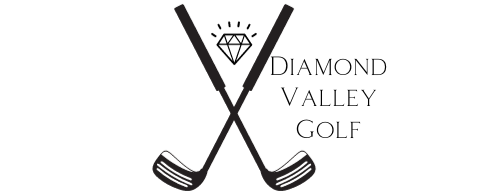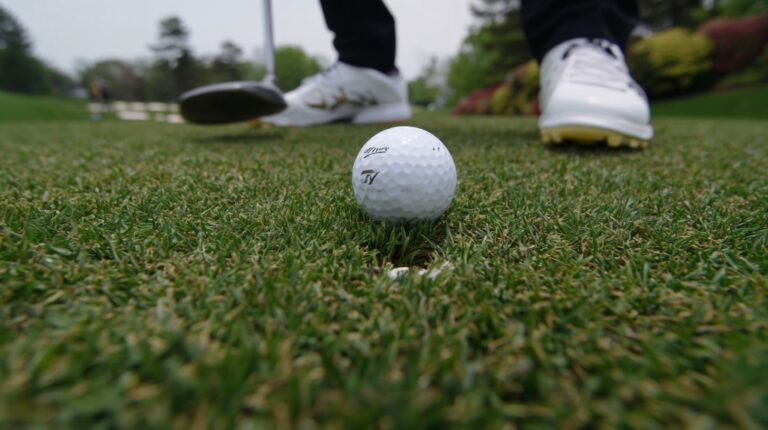A draw shot in golf curves gently right-to-left for right-handed players and left-to-right for left-handed players.
Executed correctly, it offers increased distance, improved control around obstacles, and a pleasing trajectory that can handle various on-course challenges.
Shot-shaping abilities elevate a player’s skill level and consistency, making the draw a powerful tool in any golfer’s arsenal.
Three Step-by-Step Methods to Hit a Draw
Developing a consistent draw shot doesn’t require a complete swing transformation. Small adjustments to setup, grip, and swing direction can produce reliable results.
Three practical methods can help golfers of various skill levels learn how to draw the ball effectively.
Each method emphasizes a specific component of the swing, and bullet points are included under each for easy reference and application on the range.
Method #1: Stance and Alignment Adjustment
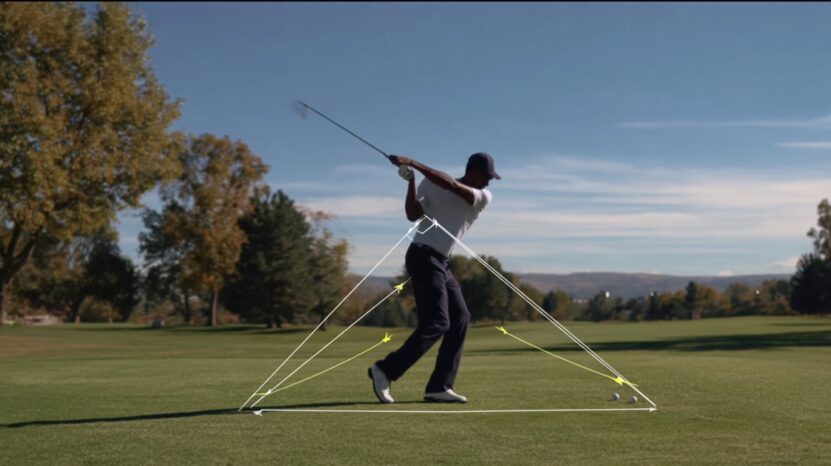
One of the most straightforward ways to hit a draw involves adjusting your body’s alignment. This method relies heavily on setup rather than swing mechanics, making it ideal for players who prefer visual cues and simple adjustments.
- Align your feet, hips, and shoulders slightly to the right of your intended target line
- Aim the clubface at the target, or just left of your feet alignment
- Swing along your foot line, which promotes an inside-out swing path
These three components work together to send the ball out to the right before it curves gently back to the target.
Visualizing this setup as a closed stance relative to the target encourages natural draw spin without overcomplicating your swing.
- Beginners or high handicappers
- Players who struggle with consistency in setup
- Golfers who benefit more from external visual references than internal swing cues
Method #2: Grip Adjustment
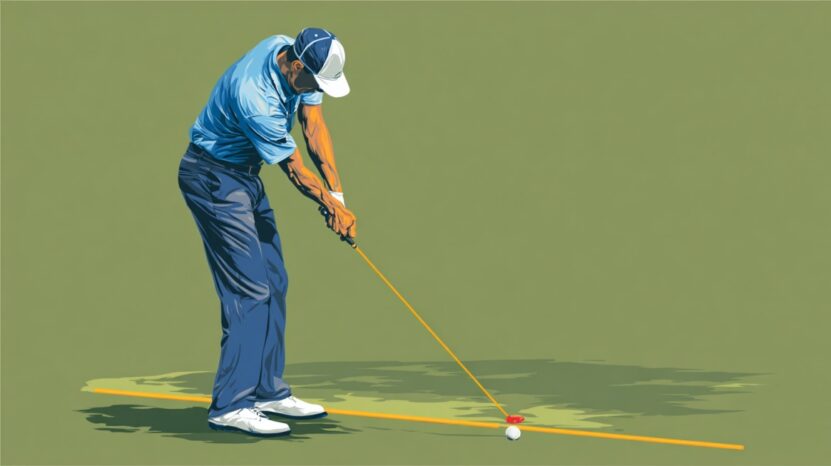
Grip influences clubface control and can significantly impact shot shape.
A stronger grip often leads to better control over draw spin, especially when paired with proper body alignment and swing direction.
- Rotate both hands slightly to the right
- On the left hand, two or three knuckles should be visible when looking down
- The right hand’s “V” (space between thumb and index finger) should point to the right shoulder
- Maintain a firm but relaxed grip throughout the swing
A stronger grip allows the clubface to close more easily during impact, helping initiate the ball slightly right of target and generating the desired curve. Hand positioning should feel comfortable and repeatable, not forced.
- Intermediate players looking for more clubface control
- Golfers who tend to leave the face open at impact
- Those already familiar with grip-pressure balance
Method #3: Swing Path Control
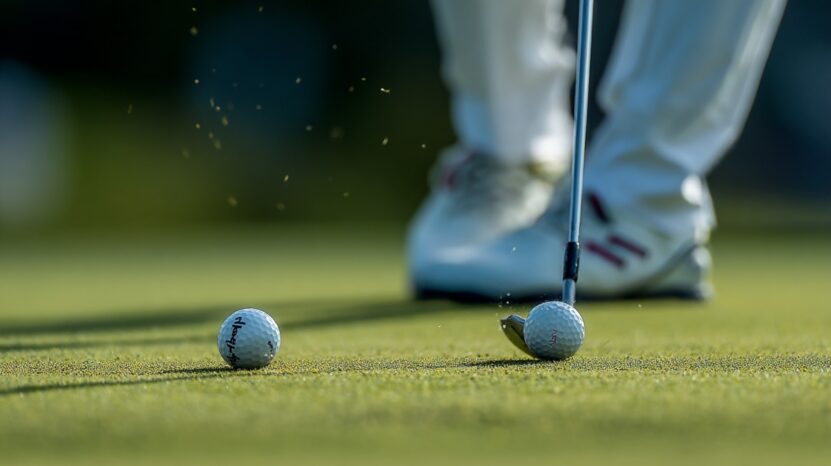
Controlling the swing path directly influences ball flight. For a draw, the goal is to create an inside-out motion that sends the ball outward before curving back. This method involves spacing, body rotation, and targeted practice.
- Stand slightly farther from the ball to promote a shallower plane
- Focus on swinging from the inside out through impact
- Ensure the hips rotate efficiently while the upper body stays stable
- Practice slow, exaggerated movements at first to feel the proper path
- Avoid swinging too hard until muscle memory develops
This method builds a draw through repetition and swing awareness. Once the motion becomes second nature, results will show in ball flight and accuracy.
- Players who have mastered basic swing fundamentals
- Golfers needing a mechanical feel for directional control
- Those working on shallowing the club in transition
Fundamentals That Influence a Draw
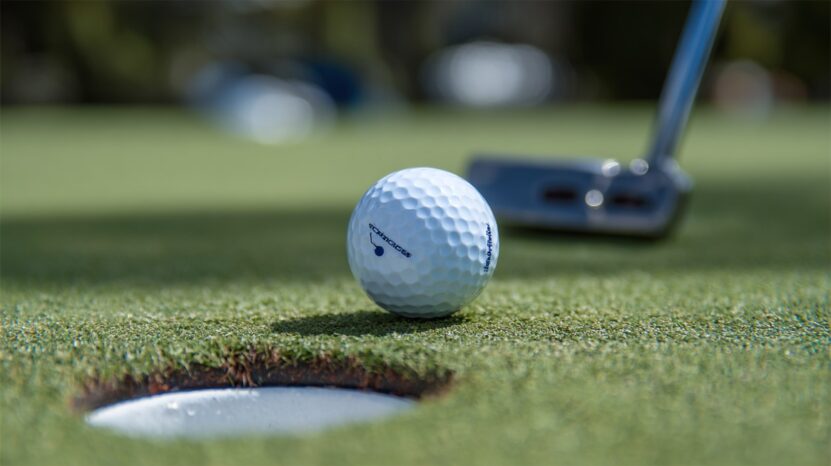
Producing a consistent draw shot requires precise control over swing mechanics, clubface orientation, and setup position. Small adjustments in body alignment and grip can yield significant changes in ball flight.
Before attempting advanced techniques, golfers must internalize foundational elements that promote a reliable draw.
- Clubface angle vs. swing path: Clubface should be closed relative to the swing path but slightly open to the target line.
- Swing path direction: An inside-out path sends the ball right before it curves back left (for right-handed players).
- Clubface at impact: Needs to remain slightly open to the target but closed to the swing path.
- Ball position: Placing the ball slightly back in the stance promotes a more inside approach.
- Grip strength: A stronger grip helps the face close through impact.
- Stance and posture: Aligning the feet and shoulders right of target assists in setting up a draw-friendly path.
A right-handed golfer benefits from swinging toward right field while keeping the clubface aimed slightly left of that direction.
Proper grip reinforces the clubface’s ability to rotate closed relative to path at the moment of contact. Ball position creates conditions that favor the correct path and face relationship.
Consistency comes only through repetition. Habits must transition into automatic responses, particularly under pressure. Adjustments made in practice must reflect course scenarios. Conditions such as slope, wind, and distance all influence when and how the draw should be executed.
Practice Drills and Tips
Drills reinforce mechanics and help fine-tune swing patterns. Using training aids and visual cues creates structure during practice sessions and accelerates progress.
- Alignment sticks: Lay one down along the foot line and another down the target line to reinforce the setup and path.
- Club selection: Begin with a 7- or 8-iron before transitioning to longer clubs.
- Visualization: Picture the intended curve and trajectory before initiating the swing.
- Video recording: Use a phone or training app to review mechanics and monitor progress.
- Exaggeration drills: Practice slow-motion swings with an exaggerated inside-out path.
Trying to shape the ball too much often leads to hooks, which can be difficult to manage. Minor corrections are far more productive than aggressive manipulations. By committing to one improvement at a time, players build confidence through tangible success.
Adjustments made on the range should gradually translate into play. Not every attempt will be perfect, but each swing builds toward familiarity with the shape and feel of a solid draw.
When to Use a Draw on the Course
Draw shots give players more options in challenging scenarios. Knowing when to apply this technique can improve overall performance and help reduce strokes in difficult areas.
Course strategy improves dramatically with reliable shot-shaping skills. The examples below illustrate common draw-friendly situations:
- Obstacles: Curving around trees or bunkers to reach the green or fairway.
- Dogleg-left holes: Matching the ball flight to the hole shape sets up better approach shots.
- Wind advantage: Favorable wind direction can enhance the draw’s effectiveness.
- Tee shots: Lower-spin flight of a draw often produces additional carry and roll.
Shot selection should be purposeful. Blindly attempting a draw can backfire if it doesn’t match the conditions or layout. Evaluating risk and opportunity makes all the difference in using the shot effectively.
Knowing how to draw the ball isn’t just a technique, but a tool for decision-making. Golfers who learn when and how to apply it sharpen their course management and become more adaptable to changing scenarios.
Final Thoughts
Every golfer should experiment with multiple techniques to find the one that complements their swing. No method fits all, so trial and error are essential.
Regular practice and feedback help reinforce the correct draw shot and eliminate inconsistent tendencies. Developing the ability to shape shots adds a competitive edge and enhances overall performance.
